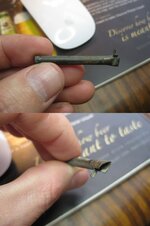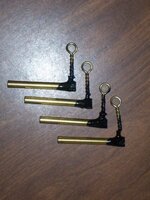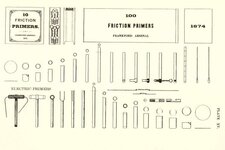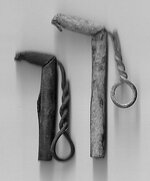staydetuned
Full Member
And one more  These things...
These things...
I've found quite a few, particularly at a homestead established in the 1850's and at a slightly later military site. Both in California... Always broken on one end, like in the picture. I have no idea what they were/are. Any idea?
Thanks for looking!
 These things...
These things...I've found quite a few, particularly at a homestead established in the 1850's and at a slightly later military site. Both in California... Always broken on one end, like in the picture. I have no idea what they were/are. Any idea?
Thanks for looking!











